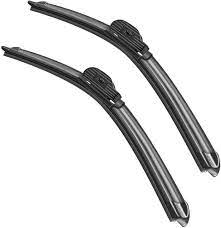Description :
Car used oxygen sensors, also known as O2 sensors or lambda sensors, play a crucial role in monitoring and regulating the air-fuel mixture in the engine combustion process. These sensors are a vital component of the vehicle's emissions control system, contributing to improved fuel efficiency and reduced emissions.
1. Function:
- Oxygen sensors measure the amount of oxygen present in the exhaust gases coming out of the engine.
- The primary function is to provide feedback to the engine control module (ECM) or engine control unit (ECU) to optimize the air-fuel mixture for combustion.
2. Types:
- There are primarily two types of oxygen sensors: upstream (pre-catalytic converter) and downstream (post-catalytic converter).
- Upstream sensors monitor the air-fuel mixture before it enters the catalytic converter, helping the ECU adjust the mixture for optimal combustion.
- Downstream sensors check the effectiveness of the catalytic converter by measuring oxygen levels in the exhaust gases after they've passed through the converter.
3. Construction:
- Most used oxygen sensors consist of a ceramic element coated with a special material that reacts with oxygen.
- The sensor has a reference chamber with a known oxygen concentration and a sensing chamber exposed to the exhaust gases.
- The voltage produced by the sensor varies based on the difference in oxygen concentration between the reference and sensing chambers.
4. Operation:
- The sensor generates a voltage signal that fluctuates between high and low levels, indicating whether the air-fuel mixture is rich (too much fuel) or lean (too much air).
- The ECU uses this information to adjust the fuel injection and optimize the combustion process for efficiency and emissions reduction.
5. Maintenance:
- Oxygen sensors can degrade over time due to contamination or wear.
- A failing oxygen sensor may lead to decreased fuel efficiency, increased emissions, and poor engine performance.
- Regular maintenance and timely replacement are essential to ensure optimal engine operation.
6. Replacement:
- When an oxygen sensor fails, it's important to replace it with a compatible sensor.
- Modern vehicles may have multiple oxygen sensors, and each sensor's replacement is specific to its location (upstream or downstream).
In summary, car used oxygen sensors are critical components that contribute to the efficient operation of a vehicle's engine and help minimize its environmental impact by optimizing fuel combustion and reducing harmful emissions. Regular inspection and replacement as needed are crucial for maintaining proper engine performance and emissions control.


